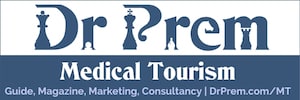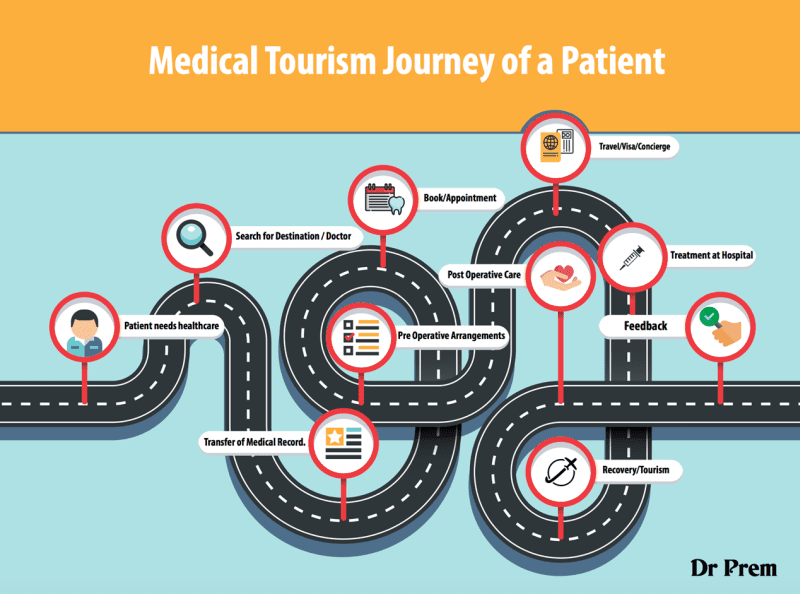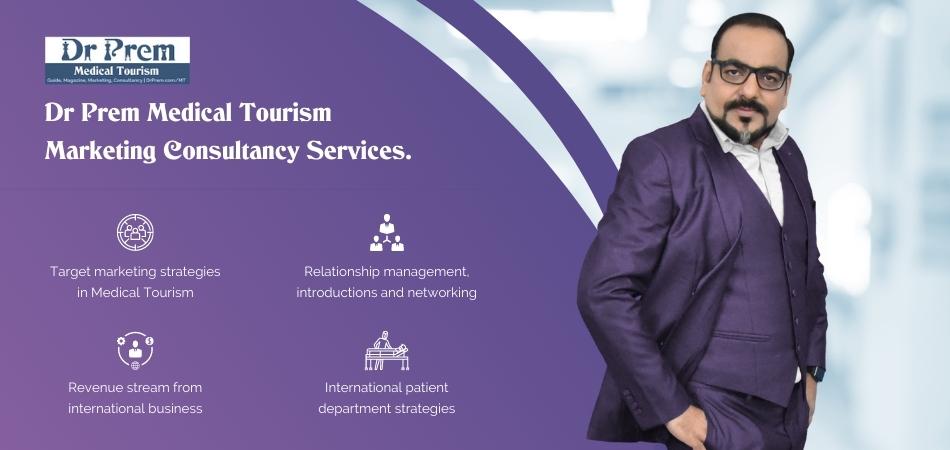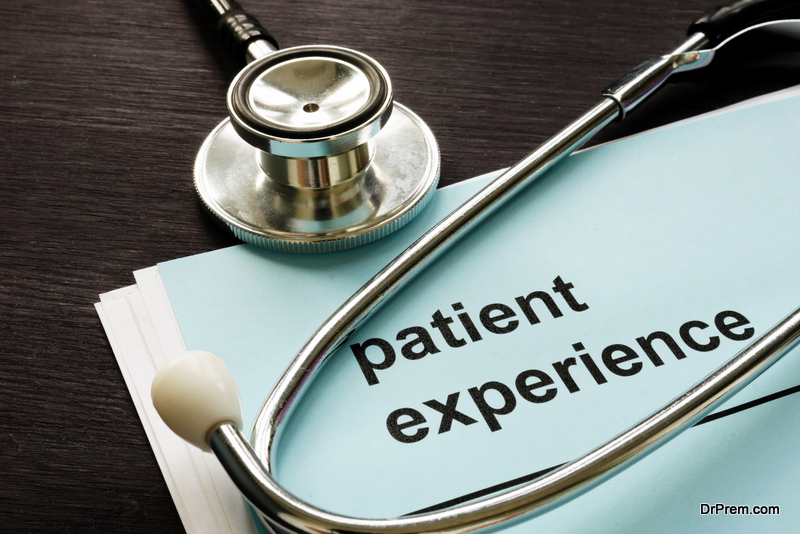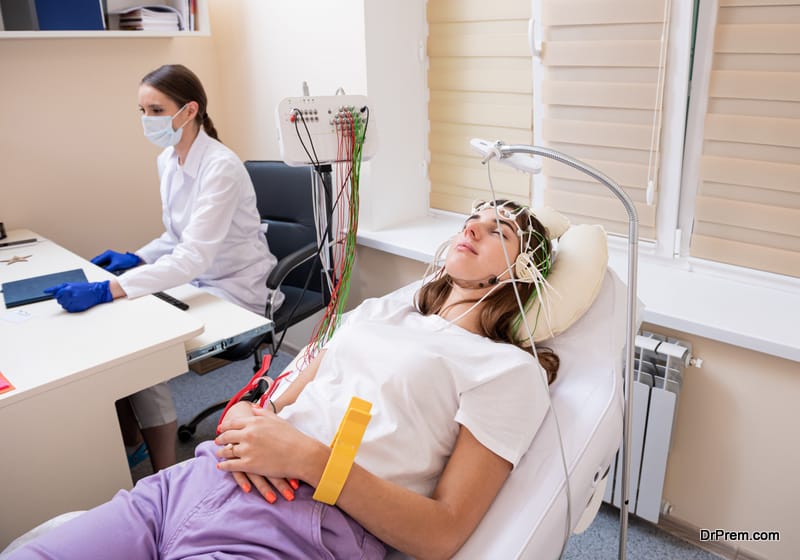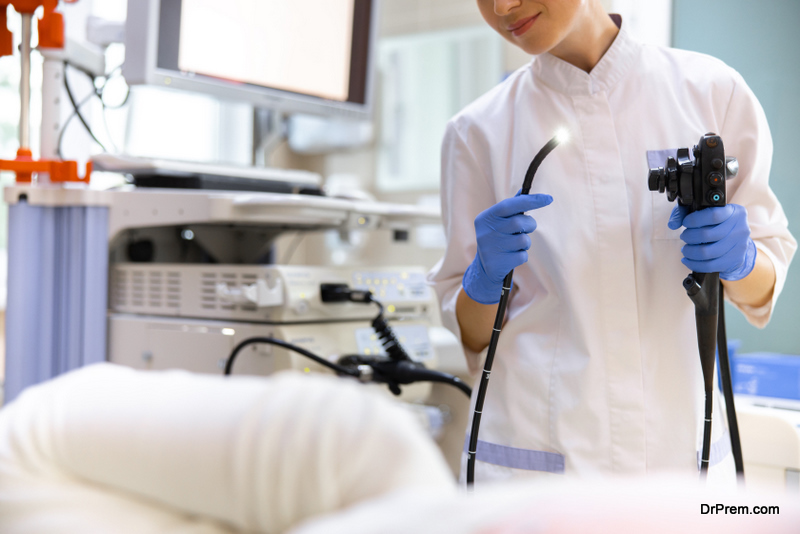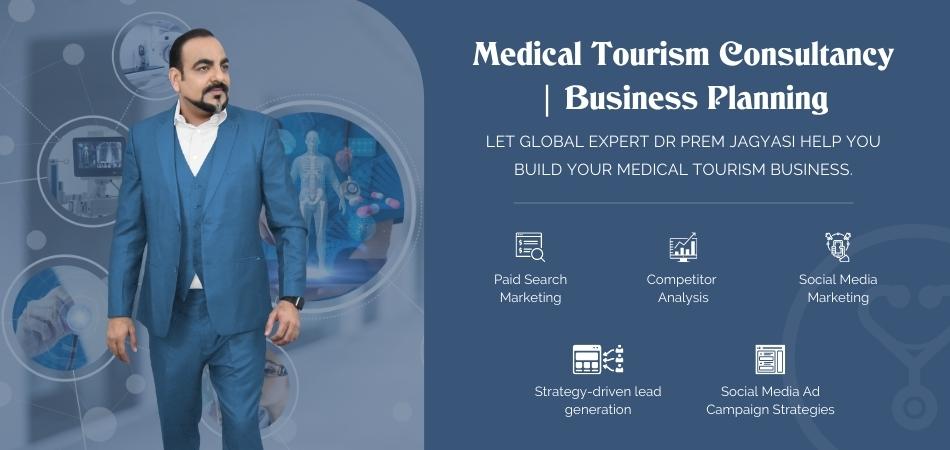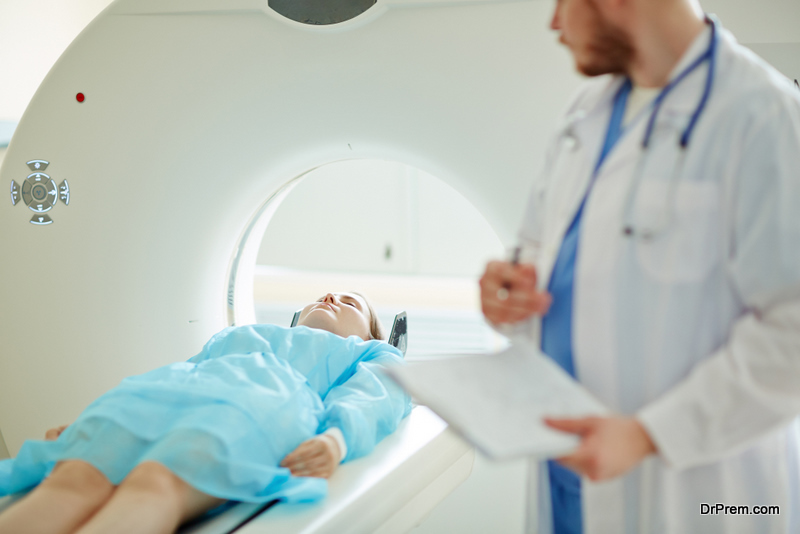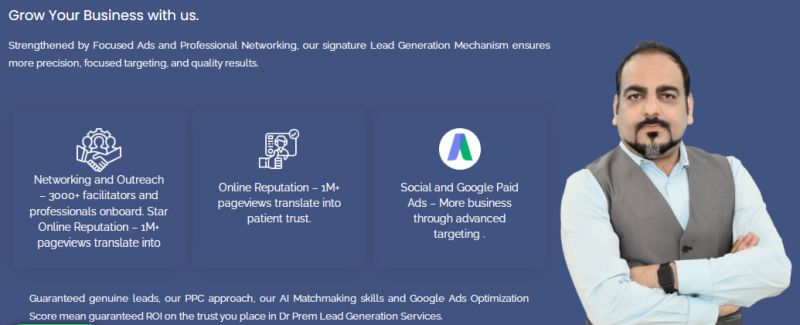Not having a clear understanding of the medical tourist’s journey is the biggest mistake you will ever do for your medical tourism business. Medical tourist journey mapping helps to get a clear vision of theend-to-end patient journey or patient flow covering different touchpoints.It helps you identify possible areas of friction enabling you realign your offerings as and when required.
If you are into some kind of medical tourism business, be it as a facilitator, agency, or provider facility, you are likely to be intrigued by the following questions:
- Who are the medical tourists and why they are travelling for overseas healthcare?
- From which countries medical tourists are travelling and to which destinations?
- How to understand the patient flow in medical tourism?
- How to plan medical tourism?
- What choice factors are more important to medical tourists?
- What are the tangible and intangible needs of medical tourists?
- What are the expectations of medical tourists?
- What is patient experience in medical tourism?
- Why a medical tourist’s background matters?
- How do you reach out to potential medical tourists?
- How to convert an enquiry on medical tourism into business?
- How to provide quality services in medical tourism?
- How to understand the complexity of medical tourism journey?
- What are the real problems or issues faced by medical tourists?
- What are delightful experiences for medical tourists?
- What is personalization of medical tourism services?
This medical tourism guide will show way to find the answers of your queries through journey mapping exercise, why it is important today and how to do it.
A Guide to Medical Tourist journey mapping to boost medical tourism business by Dr Prem Jagyasi
-
Journey mapping and patient experience – How are these correlated?
-
Medical tourist journey mapping in the current scenario
-
Why medical tourism journey mapping is important?
-
Steps for medical tourism journey mapping
-
Specify your objectives in patient journey mapping
-
Understanding the behavior of a medical tourist
-
Importance of touchpoints in creating delightful patient journey
-
Identifying the touchpoints
-
Check your toolkit
-
Preparing for the Medical Tourist Journey Mapping
-
What motivates a medical tourist to seek beyond the border care?
-
Dr Prem’s 7C’s of Patient Care
-
Define your patient persona
-
How well do you fit into the patient’s shoes?
-
Think of taking a Mock Journey
-
Review patient feedback and testimonials
-
Send surveys to your patients
-
Scan your digital channels especially social media
-
Create the Right Team
-
Do medical tourists need you – Build the perception
-
Enhance your thought reading abilities
-
Do not strive for mere patient satisfaction but for delightful experiences
-
Touchpoint Mapping and Documentation of experiences
-
Track the emotional experience of medical tourist’s journey
-
Conduct a training workshop on medical tourist journey mapping
-
Use data and metrics in your medical tourist journey map
-
Highlight moments of truth
-
Validate the journey map instead of assuming things
-
Taking actions
-
Best ways to use your medical tourist journey map
-
How Dr Prem & Associates can help you?
Journey mapping and patient experience – How these are correlated?
Every small and big encounters of the patient with your brand right from planning to various stages of travel, treatment, recovery, and follow ups add to the patient experience. Medical tourist journey mapping is all about efficient tracking of all these encounters by taking into account the patient cognitive, physical, sensorial, emotional, spiritual, and social elements.
In medical tourism, patient experience can be categorized into the following phases:
- Prior experience for medical tourism decision making.
- Ongoing experience during the pre-planning and touring and treatment phase
- Post-treatment and touring experience.
Studies suggest, patient’s decision-making is based on the cognition about something and his/her emotional evaluation that drive him/her to act for specific outcomes. All these factors again influence future relationship building with the provider, feedback and word-of-mouth referrals. Medical tourism journey mapping helps to assess these finer aspects of a patient’s journey to enable an enhanced patient experience leading to improved bottom line.
Medical tourist journey mapping in the current scenario
Given the growing complexity in medical tourism, delving deep into the medical tourist’s thought process has become more important than ever. What they say often contradicts what they think.
In the current scenario, the following points are worth observing:
- Prevailing fear of pandemic and future infection spikes.
- Fear of neglect and ignored.
- Restricted travel and limited options.
- Urgency of medical treatments.
- Growing concerns of health safety
- Destination’s measures towards safety and security of foreign patients
- Improved accessibility, affordability, and quality of offerings
Friction points are likely to grow and therefore there will be a rising need for quick and smart resolution. For facilitators, medical tourism planning will largely depend on the accuracy of journey mapping.
Why medical tourism journey mapping is important?
The journey of medical tourists starts the moment they come to know about your brand even if they do not buy your services. Medical tourist journey mapping improves your anticipation and drives you towards proactive actions before there are some real problems. Journey mapping helps in serving your customers better. You win their hearts. Medical tourism training remains incomplete if you do not know the journey mapping procedures. Expert medical tourism coaches, consultants, and advisors are emphasizing more on this journey mapping part.
The patient’s emotional involvement in different points of interaction is crucial for your brand image. A realistic view of the patient’s experience with your brand through journey mapping helps you to improve your service or product line and cut off redundant processes that do not add value.
It gives you the window for a broader view of patients’ perspective where you can bring in right measures for enhanced patient experience. Whether you are a medical tourism consultant, facilitator, or provider, journey mapping will help you setting strategies right.
Steps for medical tourism journey mapping
Specify your objectives in patient journey mapping
What is your aim? Do you want to identify the pain points and make things easier for medical tourists by knowing hard truths? Or do you want to test launch new services or products? In both the cases, the route should be different.
Understanding the behavior of a medical tourist
A medical tourist is most likely to depend on word-of-mouth referrals from friends, family members and others in the close circuit. Some may do internet searching to find the suitable destination and facility or directly reach out to medical tourism facilitators, healthcare providers, and facilities abroad. All these contacts are likely to arise from internet searching. Awareness, education, and outlook of patients play a crucial role in this search.
Importance of touchpoints in creating delightful patient journey
Do you know touchpoints are key to patient experience? If you are not converting the touchpoints into delightful experiences, businesses get meaningless. Let us assess these touchpoints and take steps to make them delightful.
Fact: The average consumer journey involves 20-500+ touchpoints.
Touchpoints are active and passive
Direct patient interaction either digital or in person are active touchpoints. Active touchpoints can be email communication or in-person meeting and communication. Passive touch points develop when the patient is in the awareness and perception-building stage that is when the patient starts knowing about you. Passive touchpoints influence more. If that experience does not delight your patient, you lose them then and there.
Fact: 87% of buying decisions begin with online research (passive) before the purchase is made.
Touchpoints touch patient’s emotion
95% of purchasing decisions are emotional. It is true with healthcare services too. Touchpoints resonating with customers’ emotions create delight. Patients fell confident that they have come to the right place.
Fact: Measuring touchpoint score is crucial to assess patient experience.
Touchpoints start from the brand exposure.
The patient’s first touchpoint is the moment they come to know about you. Improper and inadequate information at that stage is a big put-off for them.
Facts: Over 80% of friction happens between the awareness and consideration phases.
Touchpoints can make or break your patient’s journey
One single weak touchpoint interaction can break the entire experience chain. Similarly, successive great touchpoint interactions create delightful moments throughout the entire patient journey.
Fact: 86% of consumers are willing to pay more for a great experience.
Be sure of the exact number of touchpoints
How many touchpoints a patient covers while completing the buying process with your brand? Unfortunately, many businesses are not aware of this. Get the exact number. Missing one touchpoint will mean losing a patient.
Fact: Fewer the touchpoints less is the complication in a patient’s journey
Every touchpoint is an opportunity to generate profit
Are you aware of the interaction impact at each touchpoint? Mapping that data gives you insights about frictions and pleasure points to work on for a great patient experience.
Fact: Customer experience (CX) is the sole competitive factor for 66% of businesses.
Amazing communication wins
Communication, online or offline, covers many touchpoints. Much of the patient’s delight comes from these. Your customer may forget what you did for them but not how you made them feel.
Fact: Great customer service will drive 78% of consumers to repeat purchases even after a mistake.
Tap the power of personalization
Patients want to feel listened to, cared for, and well-attended. Irrelevant and generalized content at touchpoints makes them frustrated. Dive into data analytics to create personalized content.
Fact: 66% of customers will avoid buying if the content from the brand is not personalized.
Identifying the touchpoints
Touchpoint encounters are very crucial. It includes contacting a provider, facility, or a medical tourism facilitator, travel from home to the destination, consultation (physical/virtual), hospital admission, treatment, post-treatment care, discharge, recuperation, relaxation and rehabilitation, tourism and recreation, travel to home, follow-ups, etc.
Even the initial website visit is a vital touchpoint in influencing the decision-making of a medical tourist. Are these encounters annoying, satisfying, pleasing, or delightful? Journey mapping helps in discovering these hard and real truths allowing you to redefine your offerings.
Check your toolkit
The exercise of journey mapping of medical tourists covers four phases –
- Preparation
- Training
- Creation
Before you start the process, check your toolkit which necessarily should include the following:
- High sense of openness. You will not be judgmental and be able to discover unexpected things.
- It will help to unearth real insights
- You will easily step into your patient’s shoes without getting distracted from the objectives and real happenings in your organization.
- High adaptability. You will be flexible to reflect the truths.
- Diligence to dig deep.
- You cannot get all information instantly. You will need patience to build your information and knowledge bank.
- Brainstorming
- Researching
- Visualization
- Design the journey on a spreadsheet
Preparing for the Medical Tourist Journey Mapping
Journey mapping of medical tourists should start from the scratch. Long before a medical tourist reaches out to you, you should be ready with a specific format to segregate possible friction and non-friction points to enhance the patient’s experience in interacting with your brand.
What motivates a medical tourist to seek beyond the border care?
Is it affordability? Quality? Wellness and health attractions of a destination? Prompt attention? Typically, motivation factors of medical tourists could be the following:
- Advanced medical technology
- High quality care for necessary medical procedures
- Faster access to essential quality medical treatments
- Low cost for essential quality medical procedures
- Low cost for optional medical procedures and treatments
Other than the above, the decision-making of medical tourists is highly influenced by the following factors:
- Geographical proximity for travel convenience
- Cultural similarity
- Destination attractiveness, safety, and security
Medical tourist journey mapping should be focused primarily on these drivers which again may differ from patient and region wise based on their awareness, health literacy, cultural and traditional outlook. Medical tourists from the US, UK will have different preferences from that of Middle East.Simply put, you need to have a clear idea your patient persona.
Dr Prem’s 7C’s of Patient Care
Of all things mentioned above, the caring human touch should be there at every point of encounter or interaction whether it is in answering patient queries or consultation.
Does your ‘Care Delivery’ system take into account 7 crucial traits?
- Compassion: Willingness of relieve the suffering of the other
- Care: Keeping provisions in place for the health, welfare, maintenance, and protection of the concerned
- Communication: Arranging for the right communication system with the person in need
- Clarity: Clarity in words, speech, and dealings.
- Convenience: Adding elements to make things easier for the patient
- Culture: Aligning with the culture, tradition, and values of the patient
- Coordination: Efficient coordination system in place to support convenience and care factors
Define your patient persona
From which countries or region do you get or likely to get medical tourists? They may be patients from Asian countries, European countries, Middle East, Africa and so on. What is their background? What factors are driving them for medical tourism? This is the basic understanding for any medical tourism training and business.
If you have a database of such patients, it is great. You can pick a segment or a person for this journey mapping.
- Create a realistic profile of your customer based on certain things known to you. For example, their age and place of stay.
- Get into the details of their lifestyle, their needs and wants, and challenges they face.
As you get deep into these facts, you gradually develop empathy and understanding of your customers. Studying a specific medical tourist who needed maximum support and attention will help in creating the most realistic journey map.
If you are just new to medical tourism business yet to receive a patient, you need to create a customer profile based on some proven behaviors oftarget customers. This may be a rough cut but as you start dealing with varied patients, you can fine tune your journey mapping process.
How well do you fit into the patient’s shoes?
This is a key part of your medical tourists’ journey mapping. You need to step into their shoes and learn more about their roles, behavior, preferences, and anticipate actions. This means, viewing things from their perspectives and considering what hurdles they might be going or are likely to go through in reality. Frame questions using “I”.
- What would I have done if I was in the patient’s position?
- Where is the stumbling block in the process?
- Will I be satisfied with the service provided? Or something more would have helped.
- What things put me off? Is it the cumbersome website or the long wait for a response?
Think of taking a Mock Journey
Imagine yourself as the patient, and try similar procedures in different ways you feel a medical tourist will likely do. It may take some time but worth the effort. Keep a note of your findings, your actions and reactions in details. You will be surprised to see how subtle factors can swing your decision-making in seconds.
Review patient feedback and testimonials
You must be having some patient feedback and testimonials, analyze those thoroughly. Note down the hurdles faced by your patients. What annoyed them? How did they view your offerings? Monitor customer service calls.
Gather as much as feedback possible from your colleagues and teammates who are involved in different parts of the patient journey. Since they talk with your medical tourists frequently, you will get more interesting insights that you never conceived of. For example, a female medical tourist may show extreme dissatisfaction due to the absence of same-sex physician attending her despite getting the best care and treatment. She may not have voiced this issue but expected it as a default service.
Send surveys to your patients
These are like tracking few objective metrics like patient satisfaction ratings or NPS (Net Promoter Score). Question about whether the patient would recommend your medical tourism business to his/her friends or family, this will tell a lot about the patient’s experience with your brand. Neutral responses are not good for your medical tourism business.
Scan your digital channels especially social media
Your digital media channels can tell you many things about how your patients are responding or reacting to different points of the journey. Some may be extremely pleased with the initial empathetic communication from your staff while some may express annoyance about poor audio quality or language issues in communication, or any specific service.
Behavioral analytics and social media comments can help in highlighting pain and pleasure points of your patients. Medical tourism facilitators and providers should keep an eye on all digital channels to monitor the patients’ responses.
Create the Right Team
Mapping the medical tourists’ journey needs effective collaboration with staff and employees involved and have real experiences. It may be senior leaders connected with customer experience, frontline staff dealing directly with patients, contact center persons, social media reps. You can include some of your previous customers as well.
Tip:
Plan hosting a workshop or discussion session encouraging participants to open up. Note down whatever you feel is important that comes up in the discussion.
Do medical tourists need you – Build the perception
Building the journey map doesn’t mean understanding the process but improving the perception of both sides. What you think about patient’s convenience or satisfaction level and what medical tourists think and expect from you. The goal is to reduce the gap in perception of both sides. Unpleasant surprises make none happy.
The moment a medical tourist comes to know about you is the awareness phase. Whether he/she really needs you or not is a different question altogether. And a medical tourist’s journey also does not end when they leave you.
The second phase is the patient’s consideration – Do I need you? Or I may need you. This further drives the medical tourist to compare with your competitors before they arrive at the decision-making phase to purchase your product or service.
Enhance your thought reading abilities
Sneak peek into their minds and understand their needs. Are you giving proper care and attention to their needs and wants? Try to understand what is happening in their hearts and minds.
Do not strive for mere patient satisfaction but for delightful experiences
Making a patient satisfied means you have lived upto his expectations just enough but not in a meaningful way. When your care and attention exceed their expectations, they not only feel thankful about the relationship with your brand but also tries to bring new people. Gradually, you build a loyal customer base.Medical tourism training and consultation teach you how to create delightful experiences.
Touchpoint Mapping and Documentation of experiences
Touchpoint is more than the points of interaction between the medical tourist and your business. It covers seamless interaction, waiting time and business responsiveness, and delivery efficiency. Your focus should be getting a hang of the feelings and thoughts of medical tourists as they pass through different touch points and document them.
Certain points involve more emotion and pose greater relationship risk. Any minor lapse going unnoticed can add more dissatisfaction in the patient’s journey.For example, a cold response to a desperate request, or keeping waiting for long on a call can hurt the patient’s emotion who is suffering terribly.
You can frame questions based on touchpoint interaction and document the patient’s experience:
- Did this meet expectations or not?
- Did this cause pain and annoyance?
- What sort of emotions is the patient feeling?
- How many inconvenience points are there in the entire journey?
- Are these recurring inconveniences?
- What if these inconveniences show up more than once?
Tip: Create pleasant surprises in touchpoints. Like prompt response or consultation scheduling, a token offer in the first purchase or upgrading services or offering complimentary services on specific packages.
Track the emotional experience of medical tourist’s journey
Be empathetic to identify the points where medical tourists go through emotional highs and lows. This is where your brand either builds trust with the patient or lose it.Personalization sets the emotional connection quickly. Mark the patient’s emotions in your map which will help you identify where you need to work more. Labelling emotions like happy, sad, delighted, annoyed, irritated, neutral, satisfied and the like will make things easier. As you identify these emotions accurately, you will be able to determine which needs your first attention.
Tip: Be mindful in watching the behavior of medical tourists to pick up subtle signs of their emotional state.
Conduct a training workshop on medical tourist journey mapping
Things required: Your team, spacious place, post boards and notes.
Remind your team members about why they are here, their goals, and what they already know. Encourage honest and active participation and opinion sharing from each of the members. Honest comments and feedback are important, hiding truths and facts will not serve the purpose.
- Use long boards or sheets pinned on walls to draw the different phases of a medical tourist’s journey. Add some previously-mapped key points of the journey like first contact, appointment scheduling, etc.
- Add small notes on every point to show what goes on during each phase. The conversation should be focused on the medical tourist. Some rows can be assigned to add more insights and opinions from your existing customers that is medical tourists.
- Slowly map the phases of the journey with adequate awareness of what you are exploring or intend to.
- Assign small groups to brainstorm each phase of the journey. Post notes in every moment of mapping.
- Use suitable emoticons to mark the moments of high and low emotions of the medical tourist. Use pic icons like phone, computer, call center etc. to mark different channels.
- Make efforts to mark moments of truth on the map. These matter in relationship building.
- Advice team members to use “I” statements on behalf of the customer. What can be the specific challenges in different points of the journey.
Don’t get worried if maps get clumsy as you mark different points. It is a part of the process. It helps everyone have better understanding of the prospective medical tourists and patients.
Use data and metrics in your medical tourist journey map
Once you have noted down touchpoints, emotions, actions, reactions in the medical tourist journey map, now it is time to take a look at the data for alignment. Remember a specific pain for a patient may not be applicable to the other. However, you need to gather data on:
- Waiting times – How long and how frequent? What is the tolerable duration sans annoyance?
- Responsiveness – How fast? Duration? What is the average reaction of customers?
- Web-traffic bounce – Why? How Frequent?
- Booking convenience/inconvenience – What is the average feedback?
- No return of enquiries – Why? How Frequent?
- Patient satisfaction percentage and level
- Patient dissatisfaction percentage and level
- Positive surprise element – Frequency?
- Patient feedback
- Look for data outside your company in research reports, academics, and periodicals.
Human nature and behavior are complicated, therefore you will never find your map 100% complete. With diligence and curiosity, you will improve everyday in medical tourist journey mapping.
Highlight moments of truth
Which moments matter most to your patient? Are these moments delightful or painful? You need to dig out the hard reality. Highlighting these moments is a crucial part of the medical tourist journey mapping because these are the moments that do matter in your medical tourism business.
What you need to check?
- Has your promise exceeded the delivery or it ended in disappointment? It could be like disappointment with the service quality or too long waiting times.
- How your brand is handling patient anxiety? Are you capable enough to ensure a specific outcome or give assurance? This can make or break the trust.
- Moments of truth regarding your responsiveness – Care, neglect, lack of appreciation, or Zero response?
- Are you respecting or underplaying the patient’s emotions and opinions?
- Any positive moments like offering discounts, complimentary service or adding any convenient factor?
- Customer feedback and social media engagement.
Validate the journey map instead of assuming things
You have built awareness of patient behavior-driven choices and dislikes. But still you have lots to do. Are you assuming many things? These need validation from your previous and existing customers, that is patients.
- Why not ask directly about their experiences? Use video-chats or calls. Reward them for their valuable time if possible. They will feel valued and appreciated.
- Make a list of 3-4 complaining customers and request them to review about your dealing with their complaints.
- Record patient stories in their own voice for future references. The tone modulation will also help you to identify more unsaid things.
- Most importantly, select the right time for this conversation. It shouldn’t be in rush or a procrastinated exercise. If the patient is amid distress or recuperating from any surgery-related pain, he/she may not be in the right frame of mind to give opinions.
- Select the right person to handle the conversation else it will be a futile exercise.
- Go beyond the conventional queries but that doesn’t mean asking complex questions difficult for the patient to comprehend. Striking the chord is important.
Direct conversation with patients can be very challenging as you might face some unexpected surprises but it is an important task to create the most accurate journey map.
Taking actions
Your aim is to fix every pain point of your patients but the reality is, it is not possible. Therefore, you need to check few things:
- Is a specific touchpoint hindering the patient from getting the promised experience?
- How feasible it is to fix that touchpoint?
- Will it be a major diversion from your business operation?
You should schedule your priority and then think of ways to fix specific challenges. Build cross-functional team coordination with patient-first approach. The team members should continuously strive to know about what pain points will drive a patient away from taking the next step. It could be a basic website loading or navigating issue or delayed response. Installing a chatbot in the website with appropriate responsiveness can enhance the customer experience by several notches.
Best ways to use your medical tourist journey map
There are several situations and conditions to make the best use of medical tourist journey map. This is just like a road map where a tourist can identify possible road blocks and obstacles and find the best route to destination. You should take the same approach.
Let us find When and How should you use this map:
Launching new products and services
You don’t have any prior experience of how your potential customers will react to your fresh inclusions. What would be their encounter experience? This map will guide you to identify the possible points of friction. It will help you innovate new opportunities to delight them. This is crucial for every medical tourism business.
Identify points of improvement
Creating the medical tourist journey map is a continuous process. You develop newer insights about the patient’s journey as you deal with higher numbers, and this gives you the opportunity to find new ways of improvement.
Patient’s pain points opportunities to create delightful moments
Surely, you won’t like to see more trouble points for your patients but these could be your opportunities to convert them into delightful moments. For example, providing bedside infotainment or digitally empowering a patient to customize his/her meals based on recommendations.
Encourage better participation
Teach other members of your organization to create their own map based on their dealing experiences with patients. You will find out many points that your map may not delved deep enough.
Medical tourism planning, marketing, and promoting strategies will depend a lot on the accuracy of journey mapping. It is an ongoing process. The more you improve, better are your business outcomes.
How Dr Prem & Associates can help you?
Dr Prem & Associates is a global leader in medical tourism consultancy. Led by Dr Prem, we have helped many medical tourism businesses worldwide deeply understand their patient behavior and expectations for better patient acquisition. Dr. Prem has traveled to 65+ countries and worked with countless global medical experts, healthcare organizations, and medical tourism businesses. His profound knowledge of patient behavior has helped organizations find the right target market and create the right product.
Do you know that we are a global leader in medical tourism marketing? Where other companies spend massive resources to get customer insights, Dr Prem’s strategies ensure more patient acquisition at a reduced cost. Whether you are a healthcare facility, a destination, or a medical tourism startup, patient journey mapping will help you in focused targeting andinnovative services based on insights to boost growth.
